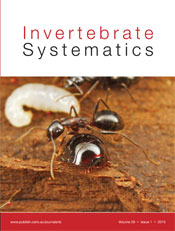IS14018Discordance between morphological species identification and mtDNA phylogeny in the flesh fly genus Ravinia (Diptera : Sarcophagidae)
The agriculturally important flesh fly genus, Ravinia, enables us to study the intersection of evolutionary lineages and morphology. In particular, we determine if there is a disagreement between inferred genetic lineages and the morphology used to identify species, finding several discrepancies in Ravinia species. The findings from this study highlight the potential problems and the benefits that integrating molecular data can have in taxonomic studies.




